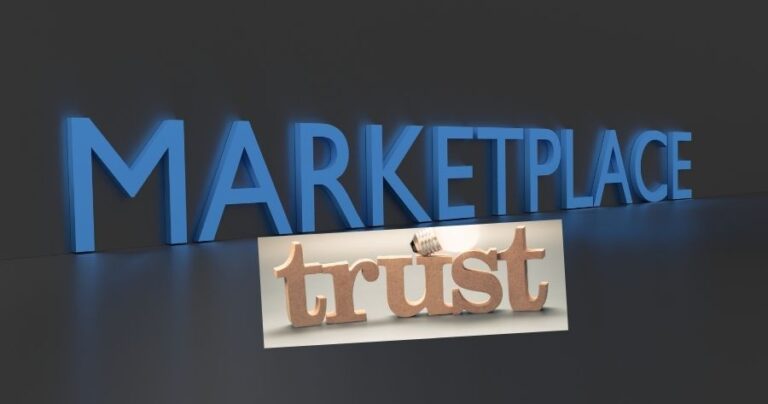
One of the most important decisions every entrepreneur faces is where to focus their sales efforts. Should you concentrate on selling in your local market, serving the community around you, or should you think bigger and sell nationally, reaching customers across the country?
This decision affects everything—from your marketing strategy and logistics to your budget, scalability, and long-term growth potential.
In this comprehensive guide, we’ll take a deep dive into local vs. national selling, exploring the pros and cons of each, reviewing real-world case studies, and analyzing how industries like retail, services, technology, and food perform under each model. By the end, you’ll be equipped to make an informed choice about which path; local or national, makes the most sense for your business.

Understanding Local Selling
What Is Local Selling?
Local selling means focusing on customers within a specific region; this could be your neighborhood, city, or even state. Businesses that sell locally often depend on face-to-face interaction, community reputation, and word of mouth.
Examples of Local Businesses
- Bakeries and cafés serving walk-in customers.
- Landscaping companies offering yard maintenance within 30 miles.
- Boutiques that rely on local foot traffic.
- Repair shops where customers drop off equipment.
- Farmers’ markets vendors supplying fresh produce.
These businesses thrive by serving nearby communities and don’t necessarily need to expand across the country to succeed.
Understanding National Selling
What Is National Selling?
National selling involves reaching customers across the entire country. This often means building strong distribution networks, investing in e-commerce, and competing with larger brands.
Examples of National Businesses
- E-commerce clothing brands shipping nationwide.
- Subscription boxes (like meal kits or skincare boxes) with delivery across states.
- Retail chains like Walmart, Target, or Starbucks.
- Tech platforms like Uber or DoorDash, which operate nationwide.
National selling opens the door to a massive audience—but also requires more money, logistics, and branding effort.
Advantages of Selling Locally
1. Stronger Customer Relationships
Local selling gives you direct access to customers. A smile, handshake, or face-to-face service creates personal bonds and loyalty.
Example: A family-owned pizza shop that knows their customers by name and remembers their favorite orders is more likely to get repeat business than a faceless national chain.
2. Lower Marketing Costs
You don’t need huge ad budgets; local businesses can grow with:
- Flyers, posters, and word of mouth.
- Local radio stations or newspapers.
- Local SEO on Google My Business.
- Social media targeting for one city or region.
3. Easier Logistics
Local selling eliminates shipping headaches. No need to worry about:
- Packaging items for long-distance transport.
- Handling nationwide returns.
- Multiple distribution centers.
4. Community Support
Many consumers prefer supporting small local businesses because it keeps money circulating in their community.
5. Flexibility
Local sellers can pivot faster. If demand shifts, they can quickly adjust inventory without affecting thousands of customers.
Disadvantages of Selling Locally
1. Limited Market Size
Your market is restricted to your area. Once you’ve saturated your town or city, growth slows.
2. Seasonal Dependence
Sales may drop in certain seasons or when local events change.
3. Local Competition
Small towns often have too many similar businesses (e.g., multiple barber shops or restaurants).
4. Limited Visibility
Without national exposure, growth opportunities are smaller.
Advantages of Selling Nationally
1. Larger Customer Base
Selling nationally exposes you to millions of customers. If your product has mass appeal, this can multiply sales exponentially.
2. Scalability
National selling allows you to scale your operations, create franchises, or expand into new regions.
3. Stronger Branding
A national presence builds brand authority and recognition. Customers trust brands they see everywhere.
4. Reduced Local Risk
If one city’s economy dips, you’re still making money from customers in other regions.
Disadvantages of Selling Nationally
1. Higher Costs
Expanding nationwide means bigger expenses:
- Warehousing and inventory management.
- Larger marketing campaigns.
- Complex logistics and shipping.
2. More Complex Logistics
National shipping brings challenges:
- Delays, lost packages, and damaged goods.
- Handling returns across states.
- Partnering with carriers like UPS, FedEx, USPS.
3. Fierce Competition
National sellers go head-to-head with big brands that have more money and recognition.
4. Legal & Tax Compliance
You must comply with state laws, taxes, and regulations—which can be overwhelming for small businesses.
Key Factors Before Choosing Local vs National
1. Market Demand
- Is your product best suited for locals (e.g., lawn care)?
- Or does it have national appeal (e.g., clothing, digital products)?
2. Type of Business
- Local-focused: restaurants, salons, repair services.
- National-focused: subscription boxes, online stores, tech products.
3. Resources
Do you have the money, logistics, and team to sell nationally?
4. Competition
If your local market is oversaturated, national expansion may be necessary.
5. Long-Term Vision
Do you want a community-driven brand or a household name nationwide?
Case Studies: Local vs National Success
Local Success Story: Magnolia Bakery
Magnolia Bakery in New York started as a small neighborhood bakery. By focusing on quality and community, it grew famous locally—eventually leading to expansion.
National Success Story: Warby Parker
Warby Parker launched online with national reach from day one, disrupting the eyewear industry by shipping glasses everywhere.
Hybrid Success Story: Five Guys
Five Guys started as a local Virginia burger joint but expanded nationally through franchises, becoming a household name.
Industry Comparisons
1. Retail
- Local: small boutiques, thrift stores, gift shops.
- National: fashion e-commerce brands like SHEIN or Zara.
2. Food & Beverage
- Local: restaurants, food trucks, farmers’ markets.
- National: Starbucks, McDonald’s, Coca-Cola.
3. Services
- Local: barbershops, gyms, house cleaners.
- National: Uber, Airbnb, software platforms.
4. Technology
- Local: IT support companies serving one city.
- National: SaaS platforms, apps, and digital tools.
Financial Comparison
Local Selling Costs
- Rent or lease.
- Small team salaries.
- Local ads.
- Lower shipping/logistics expenses.
National Selling Costs
- Warehousing.
- Nationwide shipping.
- Larger marketing campaigns.
- Customer support teams.
Marketing Approaches
Local Marketing
- Flyers, billboards, word of mouth.
- Local SEO and Google My Business.
- Local Facebook/Instagram ads.
- Sponsoring community events.
National Marketing
- Social media ads across the country.
- National influencer partnerships.
- SEO for national keywords.
- TV, radio, or podcast advertising.
Psychological Differences in Customers
Local Customers
- Expect personal service.
- More loyal if treated well.
- Prefer supporting community businesses.
National Customers
- More price-sensitive.
- Expect fast shipping and convenience.
- Less emotionally connected to the brand.
The Hybrid Approach
Many successful businesses start local, then scale nationally.
- Test your idea locally.
- Build customer loyalty.
- Refine logistics.
- Then expand gradually.
Example: Shake Shack started as a single hot dog cart in New York before becoming an international chain.
Pros & Cons at a Glance
| Factor | Local Selling | National Selling |
|---|---|---|
| Market Size | Limited | Huge |
| Costs | Lower | Higher |
| Logistics | Simple | Complex |
| Branding | Community-based | Nationwide reach |
| Competition | Local rivals | Major corporations |
| Scalability | Limited | High |
| Customer Loyalty | Strong | Variable |
Expert Opinions
- Small Business Coaches recommend starting local to reduce risk.
- E-commerce experts advise going national if your product has mass appeal.
- Franchise consultants favor hybrid models for steady growth.
Step-by-Step Guide: How to Decide
Step 1: Set your non-negotiables
Output: a short brief with goals and constraints.
- Revenue target (12 months), target margin %, cash runway, max CAC, desired brand positioning.
- Constraints: team size, capital limits, fulfilment capacity, regulatory hurdles, geography you can physically cover.
Gate: If you can’t write these on 1 page, you’re not ready to choose.
Step 2: Define the customer and “job to be done”
Output: 2–3 buyer personas and the problem they’re paying you to solve.
- Local persona(s): proximity value (speed, trust, community).
- National persona(s): convenience value (variety, price, shipping).
Quick test: Could a stranger 1,000 km away pick you over a closer option for a clear reason? If not, local-first.
Step 3: Size demand (local vs national)
Output: a simple TAM/SAM estimate for both paths.
- Local: population × % who buy × average frequency × AOV.
- National: same math, but segment by 3–5 top regions you can serve well.
- Validate with signals: search interest, marketplace listings, competitor volumes, small survey or preorders.
Gate: If local SAM < your 12-month revenue target even at optimistic share, you’ll need national or hybrid.
Step 4: Map competition and your edge
Output: a 2×2 grid (Price high/low × Service high/low) with you and top competitors.
- Local edge ideas: speed, personalization, installation, showrooms, community.
- National edge ideas: selection, price, content, subscription, bundling, reputation.
Gate: If you can’t name a durable edge for national, default to local or hybrid.
Step 5: Build unit economics for both options
Output: per-order P&L and per-customer P&L. Use the Excel I attached.
- Inputs: Price, COGS, shipping/delivery, packaging, platform/processing fees, returns rate & cost, CAC, orders per customer, LTV.
- Metrics to check:
- Gross profit per order ≥ 30% of price (product) or ≥ 50% contribution for services.
- LTV/CAC ≥ 3 for paid acquisition; ≥ 2 is the bare minimum.
- Returns < 8% for soft goods without free returns; if offering free returns, model the hit.
Gate: If national GP/order turns negative below 100 monthly orders, hold national and optimize.
Step 6: Stress-test logistics & SLAs
Output: a fulfilment/returns flow with time and cost at each step.
- Local: last-mile (own riders vs third-party), delivery windows, cash-on-delivery, in-store pickup.
- National: 3PL vs self-fulfilment, zones, carrier cutoffs, packaging standards, damage & return policy.
- Define service levels: “order by 12:00, ship same day,” “delivery within 48–72 hours,” etc.
Gate: If you cannot hit an SLA that beats or matches top national competitors, don’t scale nationally yet.
Step 7: Marketing plan and budget by channel
Output: a channel mix with CAC targets and tracking plan.
- Local: GMB/Maps, local SEO, flyers/OOH, partnerships, WhatsApp groups, local influencers.
- National: search ads (high-intent), paid social (prospecting + retargeting), marketplaces, affiliates, influencers, email/SMS lifecycle.
- Allocate test budget (e.g., 10–20% of monthly revenue) with kill rules (pause any ad set with CAC > target after 3–5× CPA).
Gate: If you can’t afford 2–3 CAC cycles with your runway, delay national acquisition.
Step 8: Legal, tax, and compliance pass
Output: a checklist of registrations, taxes, data/privacy, and product compliance.
- Local: business registration, local taxes, permits, receipts/invoicing laws.
- National: sales tax/VAT handling, interstate shipping rules, product labeling/standards, data protection, consumer rights & returns windows.
Gate: If compliance risk > “medium” and you lack counsel/processes, keep scope local while you set it up.
Step 9: Build a 90-day pilot (one path at a time)
Output: a time-boxed test with clear success criteria.
- Local pilot: 90 days across 2–3 neighborhoods; offer 24–48h delivery; track NPS, repeat rate, and delivery cost/order.
- National pilot: 90 days across 3–5 states/regions; 1 carrier + 1 backup; strict SKU list; track GP/order, on-time delivery rate, return rate.
- Success criteria (examples):
- GP/order ≥ target, On-time ≥ 95%, CAC within plan, Repeat ≥ 20% by day 60, Refunds < 3%.
Gate: If pilot misses ≥ 2 critical metrics, iterate then retry—not expand.
- GP/order ≥ target, On-time ≥ 95%, CAC within plan, Repeat ≥ 20% by day 60, Refunds < 3%.
Step 10: Use a weighted scorecard (objective tie-breaker)
Output: a single number for each path.
- Rate both Local and National 1–5 across: Demand, Unit Economics, Operations, Marketing Capacity, Competition, Legal, Brand Fit, Risk Diversification.
- Apply weights (already set in the Excel) and compare totals.
Rule of thumb: If the winner leads by ≥15 points, commit. If it’s within 10, choose hybrid and re-test in 60–90 days.
Step 11: Cash flow and inventory plan
Output: a 16-week cash flow with best/base/worst scenarios.
- Model DSO/DPO, inventory turns, safety stock, and promo calendar.
- National often ties more cash in inventory + freight; ensure access to working capital (supplier terms, PO financing, etc.).
Gate: If worst-case cash dips below 6 weeks of runway, scale slower.
Step 12: Commit, communicate, and calendar reviews
Output: a 6-month roadmap and KPI dashboard.
- Pick the path (Local, National, or Hybrid) and set monthly targets for: revenue, GP%, CAC, on-time deliveries, return rate, NPS, repeat rate.
- Schedule 30/60/90-day reviews to decide “scale / hold / roll back.”
- Document learnings; build playbooks (fulfilment, support, promos, returns, fraud).
Conclusion
So, selling locally vs nationally: which is better?
The answer depends on your business model, resources, and goals.
- Local selling is best for businesses that thrive on community trust, low costs, and face-to-face service.
- National selling is ideal for scalable, widely appealing products with room for big growth.
- The smartest path for many businesses is a hybrid approach: start small, succeed locally, and expand when ready.
At the end of the day, the right choice is the one that aligns with your vision, resources, and customers’ needs.





